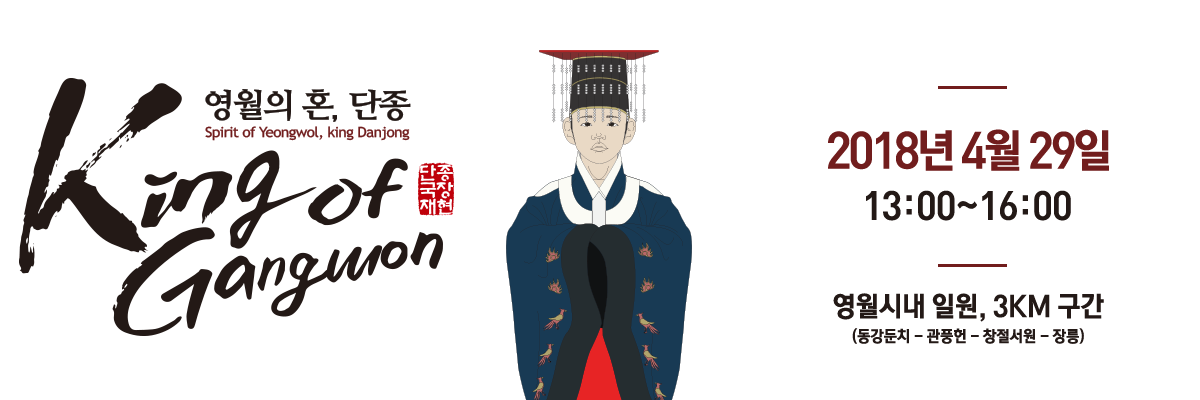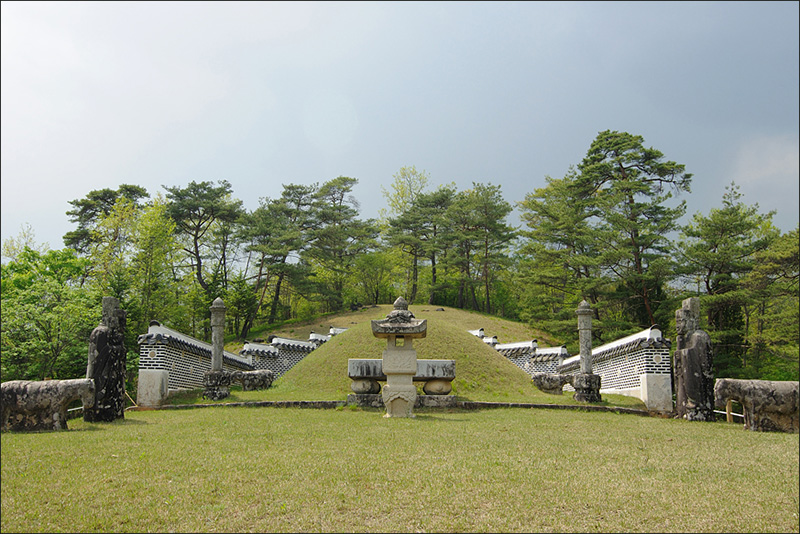본문
A propitious site where a roe deer slept
Jangneung
(1090-1, Yeongheung-ri, Yeongwol-eup, Yeongwol-gun, Gangwon-do)
When King Danjong died after receiving the poison as death penalty in Gwangpungheon, his boy was not recovered but thrown away along the riverside of Donggang River. There was no one who retrieved his body. During this time, Yeongwol Hojang, Heung Do Um, went out to Donggang River in the middle of the night and secretly retrieved King Danjong’s body and carried him on his back using an A-frame to go up the mountain ridge. He found a secret burial place where the roe deer had been sleeping. Afterwards, the governor Chung Won Park devotedly looked after the burial mound.
In 1517, King Danjong’s grave was known following the royal command of King Jungjong (the 11th king of the Joseon Dynasty). In the 7th year of the reign of King Sukjong in 1681, King Danjong was elevated as Prince Nosan instead of Seoin, or common people. In the 24th year of the reign of King Sukjong in 1698, King Danjong was reinstated and received the royal tomb called Jangneung.
Later on, King Danjong’s corpse was moved to Dongeuljisan Jangneung and Heung Do Um’s loyalty to make a secret burial was highly praised to grant him an official rank as Gongseo Panseo. Also, in order to pay tribute to Heung Do Um’s loyalty in Jangneung, the Heung Do Um’s Jeongryeogak monument was set up. In order to pay tribute to Chung Won Park’s loyalty of finding out King Danjong’s grave, the Chung Won Park’s Nakchonbigak monument was set up. Meanwhile, there are buildings in Jangneung that cannot be seen in other royal tombs, including Jangpanok and Baesikdan.
In 1791 (the 15th year of King Jeongjo), King Jeongjo was going to his father’s grave and stopped by at the tombs of the six martyred ministers. During this time, he added the outstanding people who maintained integrity spirit like the six martyred ministers.
In addition to the royal families and the Royal Court’s subjects, a total of 268 people, including 32 loyal subjects, 186 research secretaries, 44 eunuchs, military officials, and slaves, and 6 women, were classified according to their status like eunuch, military official, slave and court lady by contribution. Jangpanok was established to enshrine their ancestral tablets, and Baesikdan was constructed to hold sacrificial rites.


















